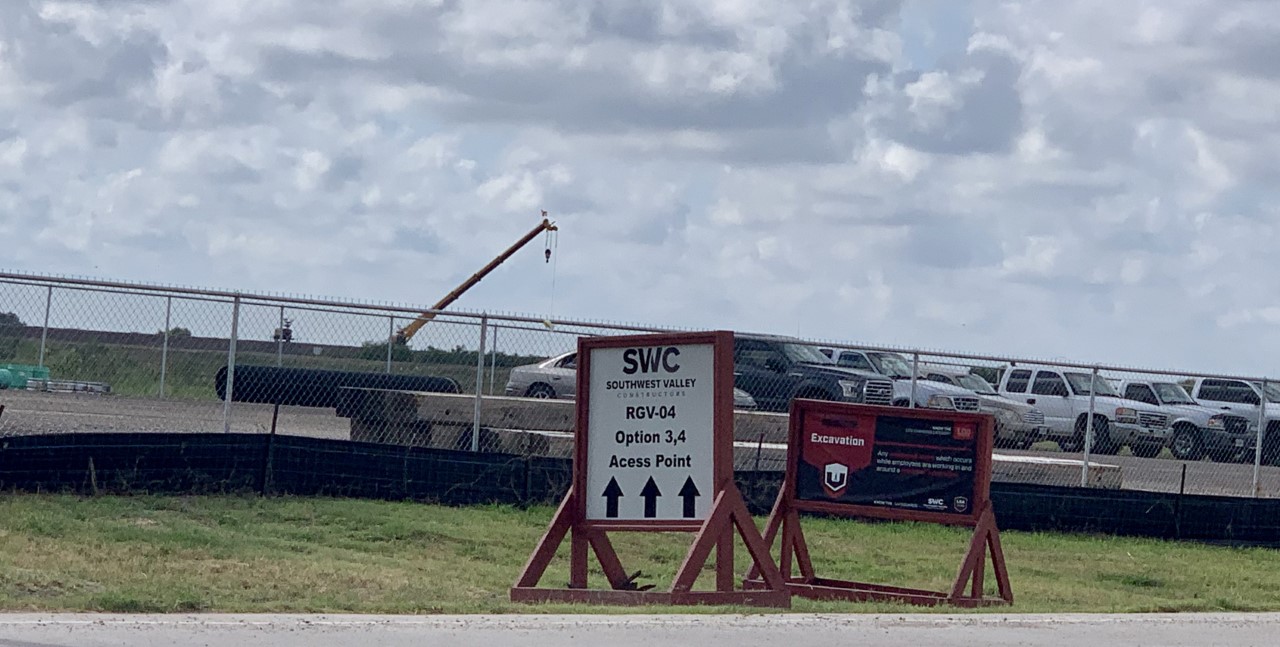(EDITOR’S NOTE: This story has been updated with information from CBP.)
SAN JUAN, Texas (Border Report) — Border-wall contractors have cleared a swath of land just feet from two historic South Texas cemeteries, including one containing the graves of a local Native American tribe, and where tribal members stood guard for over a year, hoping to prevent surveyors from entering the property.

The tribe has since moved locations, but not before learning that the border wall would not not be on cemetery lands, its tribal chief told Border Report.
Since January 2019, members of the Carrizo/Comecrudo Tribe of Texas lived on land next door to the Eli Jackson Cemetery, a site they called Yalui Village. The tribe recently moved about 100 miles upriver to Zapata County, Chief Juan Mancias said Friday.
“They (CBP) started coming in there,” Mancias said of recent land-clearing nearby that has begun. “They’ve gone in there and done whatever they could to get as close as possible to the cemetery.”
They’ve gone in there and done whatever they could to get as close as possible to the cemetery.”
Juan Mancias, leader of the Carrizo Comecrudo Tribe of Texas
On Monday, contractors hired by U.S. Customs and Border Protection were using earth-moving heavy equipment to clear brush and grade and smooth land on the levee built by the International Boundary and Water Commission, CBP officials confirmed to Border Report. Land that is already cleared is about a block from the southeast corner of the Eli Jackson Cemetery, but not on cemetery property. And stakes placed by government contractors are located just feet from the edge of the cemetery.

On the north side of the levee is a giant staging ground for equipment, water tanks and contractors, who also are actively clearing land on the levee to the east, which would likely eventually connect to border wall currently being built about five miles to the east south of the town of Donna, Texas.






These photos the Eli Jackson Cemetery and the levee cleared directly adjacent to it on Aug. 23, 2020 neat San Juan, Texas. (Sandra Sanchez/Border Report)
In approving Fiscal 2020 funds, Congress exempted from border wall construction the historic Eli Jackson Cemetery and the nearby Jackson Ranch Church and Cemetery. The Fiscal 2021 budget passed by the House also has language in it to exempt “historic cemeteries” from border wall construction, but the Senate has not yet passed the measure, and it also must be signed by the president.
U.S. Rep. Henry Cuellar, a Democrat from South Texas who is vice chairman of the House Appropriations Homeland Security Subcommittee, told Border Report on Friday that Homeland Security officials have reiterated that they will not construct border wall segments on historic cemetery lands along the Southwest.
But that doesn’t mean the land immediately adjacent to a historic cemetery will be spared.
Mancias said his people, who call themselves Estokgna, had maintained a 24/7 vigil in the area for 18 months but pulled out of the area to focus on other areas where they worry the earth is being denigrated, such as the LNG terminals being built at the Brownsville Shipping Channel on the Gulf of Mexico.
“We did what we had to do. We brought the attention nationally,” Mancias said via phone.
This video, taken in October 2019 by Border Report shows Yalui Village with tents and people living on site. (Sandra Sanchez/Border Report file video)
Fifty to 150 graves are located at the historic Eli Jackson Cemetery, which is in such a remote location that most Internet maps refer to it only by longitude and latitude coordinates. Many of the remains, which date back to the 1800s and are in unmarked graves, belong to members of the tribe, as well as emancipated slaves. .
The church and cemeteries are part of a ranching settlement founded in 1857 by Nathaniel Jackson, a white plantation owner, and Matilda Hicks, a former slave who helped slaves escape to Mexico by crossing the Rio Grande.
There also are many Civil War veterans buried at these sites.
CBP officials told Border Report on Monday “the construction will not encroach on the land” of the Eli Jackson Cemetery. A 150-foot enforcement zone on the adjacent property — which is only .2 miles long — is slated for the northside of the levee and a patrol road is expected to be built on the southside of the levee at that juncture, CBP officials said in an email.






These photos taken on Monday show border wall construction on the levee to the east of the cemetery, about a mile away, which could eventually connect to the border wall currently being built south of Donna, Texas. (Border Report Photos/Sandra Sanchez)
This border area, where the Rio Grande winds and curves, already has some fencing in place from the 2006 Safe Fence Act under the Obama Administration. But President Donald Trump wants the border wall to connect and has awarded a contract for nearly $300 million for 22 miles of noncontinguous border wall to fill in the gaps in this area.
Mancias said 28 laws are being waived in order to build this segment of border wall, including the Native American Graves Protection and Repatriation Act.
“We’re not going into the night quietly. We’re going to make sure that everybody knows exactly what’s happening there and that they are compromising the land and the air and water that’s why they waived all those 28 laws,” Mancias said. “And that structure aint going to stay up forever.”




